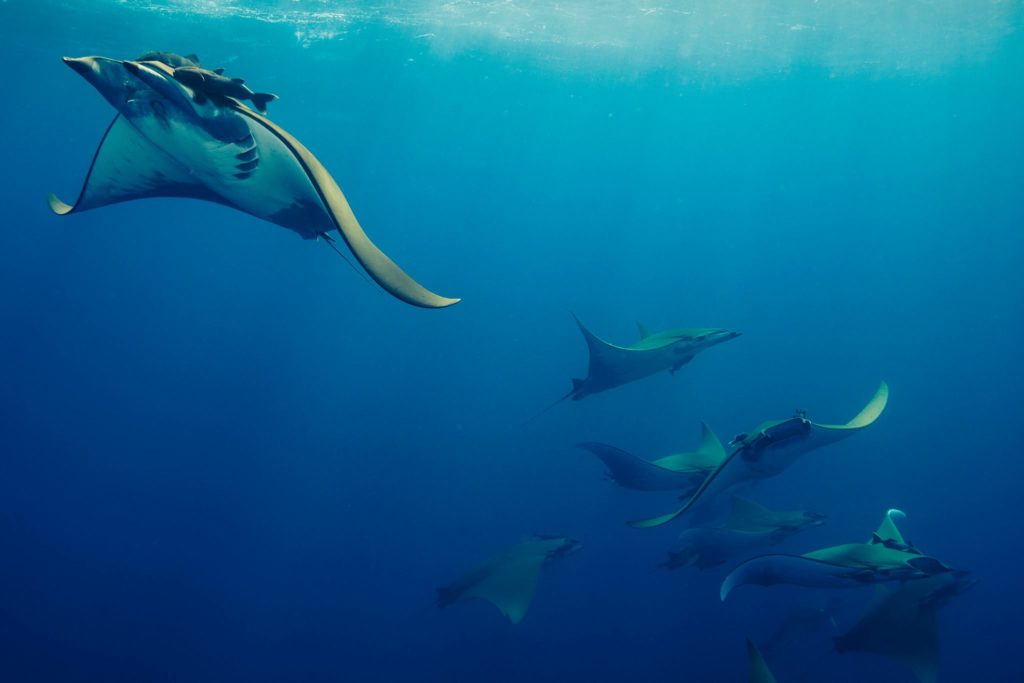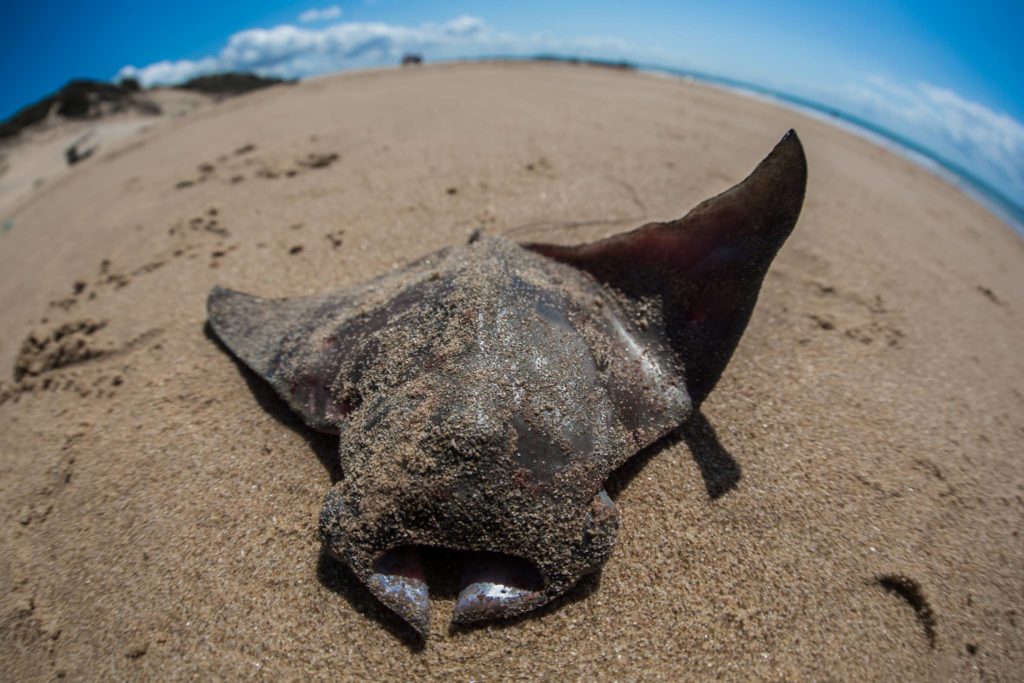 Seb Pardo is a biologist currently doing a PhD at Simon Fraser University in Canada. He is broadly interested in the biology, ecology, and conservation of sharks and rays. At present, his research is focused on borrowing tools from evolutionary biology to predict the biology and extinction risk of poorly studied sharks and rays. By using these data-poor methods, he hopes to make the most out of currently available data to inform policy decisions relevant for the sustainable management of sharks and rays. His twitter handle is @sebpardo
Seb Pardo is a biologist currently doing a PhD at Simon Fraser University in Canada. He is broadly interested in the biology, ecology, and conservation of sharks and rays. At present, his research is focused on borrowing tools from evolutionary biology to predict the biology and extinction risk of poorly studied sharks and rays. By using these data-poor methods, he hopes to make the most out of currently available data to inform policy decisions relevant for the sustainable management of sharks and rays. His twitter handle is @sebpardo

© Daniel Van Duinkerken — http://danielvandphoto.com — Instagram: daniel.van.d
Rays rarely get the same amount of attention as sharks do. Perhaps the most notable exception are the manta rays (genus Manta), which are charismatic, filter-feeding rays that inhabit warm waters throughout the world’s oceans. Their closest relatives, the devil rays (genus Mobula), are not nearly as “famous” — even though they are the only other members of the family Mobulidae. There are nine species of devil rays found throughout the world’s tropical and temperate oceans, and while they are smaller than mantas (only reach over 3 metres in width), devil and manta rays are so similar that they are sometimes confused with each other. Because devil rays garner less public interest, the are very few studies on their basic biology and ecology, hindering our ability to assess their status.
Devil and manta rays face similar threats. Both are often caught as bycatch in industrial and artisanal fishing operations, which may result in considerable mortality even after being released. On top of this, there has been an increase in the international demand for their gill plates, which are used a health tonic in Chinese medicine. This has increased targeted fishing and bycatch retention in many places around the world. However, because of the lack of information on devil rays, it is very difficult assess whether this level of catch and trade is sustainable. This is the key question we set out to answer.
We used a unique length-at-age dataset of individuals collected along the Pacific coast of Mexico and coupled it with published life history information to estimate three key measures of sustainability[1]: (1) the growth rate of devil rays (the rate at which an individual devil ray grows in width throughout its lifetime, which is related to productivity), (2) their ability to replenish their populations, technically called the “maximum intrinsic rate of population increase” and shortened to rmax, which we compared with that of other sharks and rays, and (3) the fishing mortality rate at the site of collection. What did we discover?:
1) The estimated growth rate of devil rays is much lower than previously thought.
2) Devil rays have one of the lowest capacities to replenish their populations among sharks and rays (that is, a very low rmax). One factor contributing to this is that they only give birth to a single pup around every two years, which combined with the relatively short duration of their reproductive life span, means they can only produce few offspring throughout their life. In this regard, their productivity is indistinguishable from manta rays.
3) Fishing mortality from catches around Baja California, Mexico (in 2002-2005), suggests that a small-scale artisanal fishery operating in the area was unsustainable. We used what is called a catch curve to estimate fishing mortality of the devil rays collected at the site. Simply put, we calculate the reduction in devil ray number as they get older. We can then estimate the total mortality of the population, and by subtracting the natural mortality (these are animals that die from natural causes such as disease or predation), we can estimate the fishing mortality rate at this location. What we found is that fishing mortality was slightly higher than the maximum rate of population increase, which means that they were being fished at a rate higher than they could replenish their populations. This has very important implications, as it suggests that even small unregulated artisanal fishing operations can significantly reduce devil ray populations.

© Daniel Van Duinkerken — http://danielvandphoto.com — Instagram: daniel.van.d
Taken together, the slow growth, low fecundity, and low maximum intrinsic rate of increase, all point toward devil rays having a very low productivity. This raises alarm bells, given the current fishing pressures and trade demand they are facing. Given that the productivity of devil rays is very similar to that of manta rays, our study suggests that both groups should be protected to a similar degree. But are these species protected similarly around the world?
Partly due to these increased fishing pressures, mantas rays have seen considerable population declines, which resulted in both manta ray species being listed as Vulnerable by the International Union for the Conservation of Nature (IUCN) in 2011. Because of these population declines and their low productivity, in 2013 manta rays were listed under Appendix II of the Convention on International Trade in Endangered Species (CITES), which regulates international trade for this species. CITES is a very important agreement for conservation as it is legally binding, meaning that countries that adhere to it are legally required to follow CITES resolutions.
This was considered as a conservation success for manta rays, as it meant that it can only be traded international when the trade is demonstrated as legally and sustainably sourced. However, recent anecdotal evidence indicates that in some parts of the world the trade has shifted solely to focus on devil ray gill plates. Furthermore, the Chilean Devil Ray (Mobula tarapacana) was reassessed this year by the IUCN Shark Specialist Group[2], and like the manta rays, was also listed as Vulnerable. Given that regulating international trade of manta rays was deemed as an adequate protection by the Parties at CITES, and that devil rays also have very low productivities and face similar threats, shouldn’t the international trade of devil rays be regulated as well?
References
[1] Pardo, S. A., Kindsvater, H. K., Cuevas-Zimbrón, E., Sosa-Nishizaki, O., Pérez-Jiménez, J. C. & Dulvy, N. K. (2016). Growth, productivity, and relative extinction risk of a data-sparse devil ray. Scientific Reports, 6, 33745.
[2]Pardo, S. A., Walls, R. H. L. & Bigman, J. S. (2016). Mobula tarapacana. The IUCN Red List of Threatened Species 2016: e.T60199A100016302. Downloaded on 25 September 2016.
This is a great summary for a really important issue I was happy to learn more about! Thanks Seb!